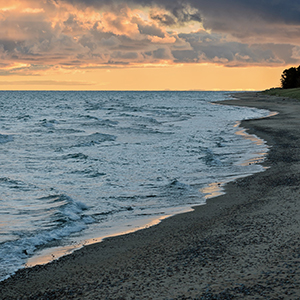 Smart Citations
Smart CitationsSee how this article has been cited at scite.ai
scite shows how a scientific paper has been cited by providing the context of the citation, a classification describing whether it supports, mentions, or contrasts the cited claim, and a label indicating in which section the citation was made.
Littoral chironomids and oligochaetes in the subalpine Lake Maggiore: a first dataset

Accepted: 8 February 2023
HTML: 20
All claims expressed in this article are solely those of the authors and do not necessarily represent those of their affiliated organizations, or those of the publisher, the editors and the reviewers. Any product that may be evaluated in this article or claim that may be made by its manufacturer is not guaranteed or endorsed by the publisher.
A dataset of 227 oligochaetes and 373 chironomids occurrence records from the subalpine Lake Maggiore, a large and deep temperate lake in Northern-Western Italy and Switzerland was developed within the Interreg Italy-Switzerland 2014-2020 Parchi Verbano Ticino Project (ID:481668) funded by the European Regional Development Fund (ERDF). The lake belongs to the national (LTER-Italy), European (LTER-Europe) and International (ILTER) long-term ecological research networks. Data were collected during the summer-autumn period in 2019-2021. Chironomids (Insecta, Diptera) and oligochaetes (Annelida, Clitellata) were identified to genus/species gr./species level by the authors. All 600 occurrence records are georeferenced and organised in a standardised Darwin Core Archive format. These data gathered along the littoral areas of Lake Maggiore will contribute to the development of common implementation strategies for shared and sustainable water management level of the lake, with particular reference to the protected natural areas (sites belonging to Natura 2000 network in Italy and to the Emerald Network in Switzerland). The authors strongly believe in the great potential of open access occurrence records in biogeographical studies and ecological research in the context of global environmental changes. For that reason, the dataset has been uploaded to the Global Biodiversity Information Facility (GBIF), an intergovernmental free and open access biodiversity data infrastructure.
Edited by
Silvia Quadroni, University of Insubria, Varese, ItalySupporting Agencies
INTERREG Italian-Swiss project “ParchiVerbanoTicino”How to Cite

This work is licensed under a Creative Commons Attribution-NonCommercial 4.0 International License.

 https://doi.org/10.4081/jlimnol.2022.2124
https://doi.org/10.4081/jlimnol.2022.2124






